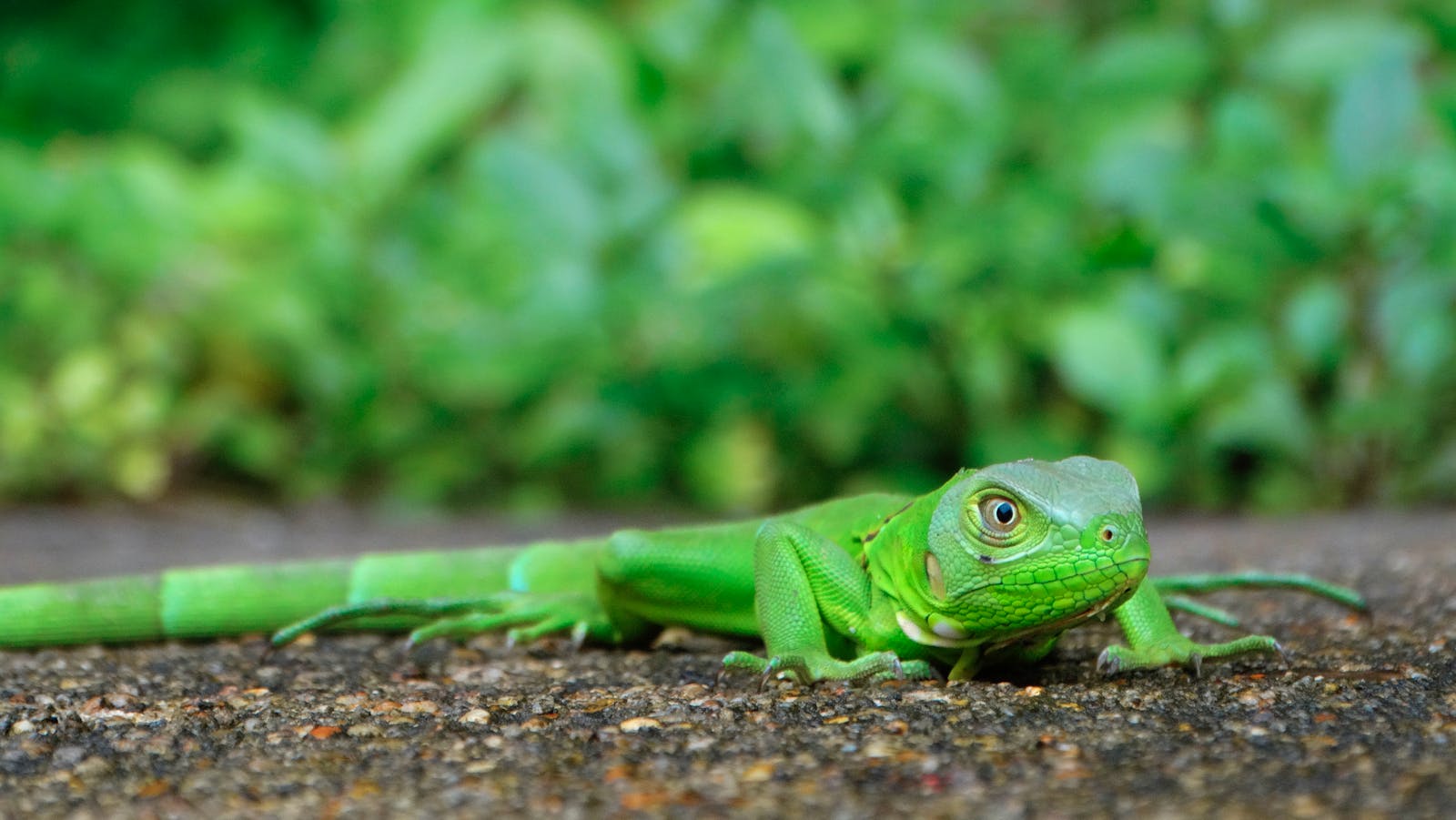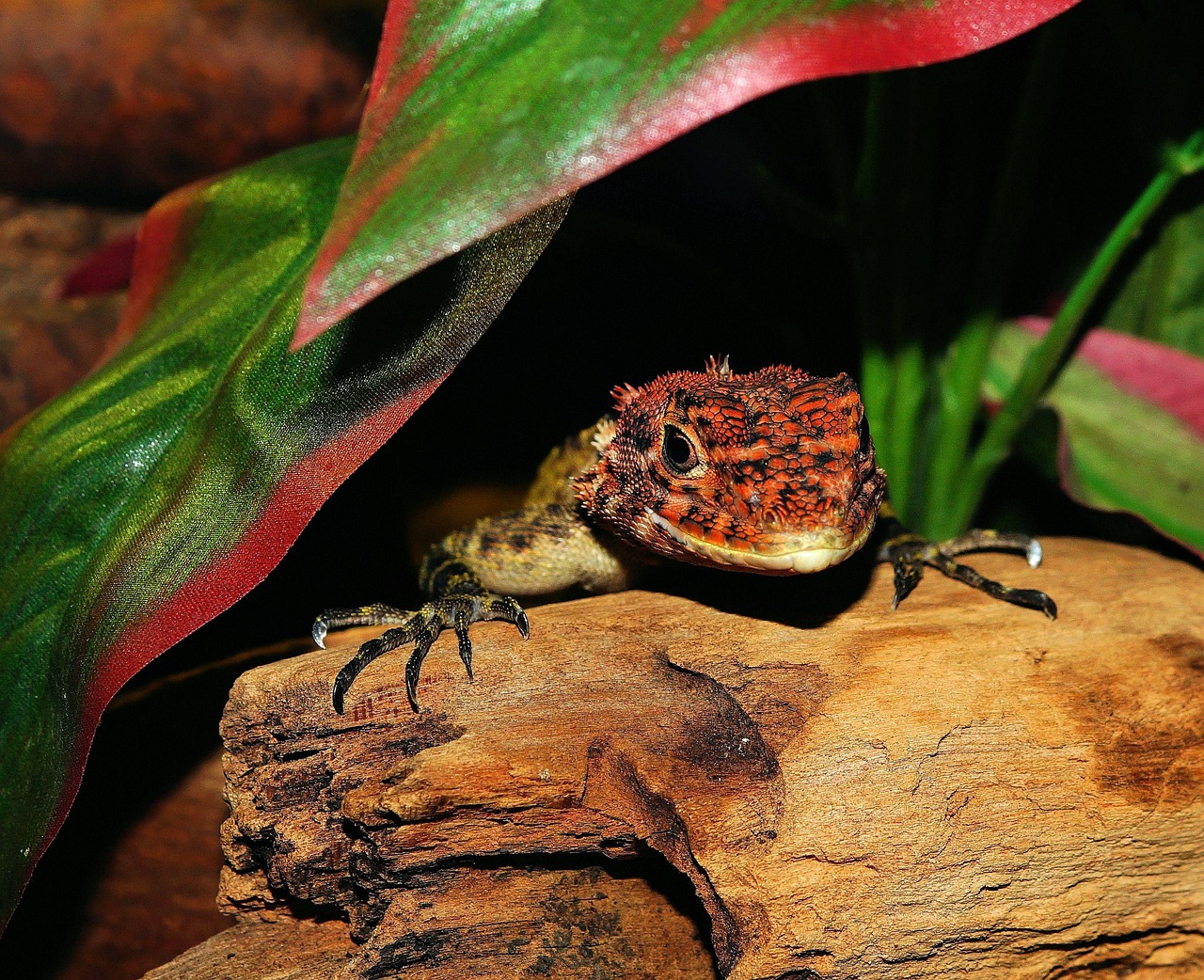Geckos are fascinating reptiles that make wonderful pets for both beginners and experienced reptile enthusiasts. These charming creatures thrive when provided with an environment that closely mimics their natural habitat and minimizes stress factors. Creating a comfortable, secure space for your gecko isn’t just about aesthetics—it directly impacts their health, longevity, and overall well-being. When geckos experience chronic stress, they may exhibit concerning behaviors like appetite loss, hiding excessively, or even developing health issues. By understanding your gecko’s specific needs and implementing thoughtful habitat design, you can create a sanctuary where your scaled companion can flourish for years to come.
Understanding Your Gecko’s Natural Habitat
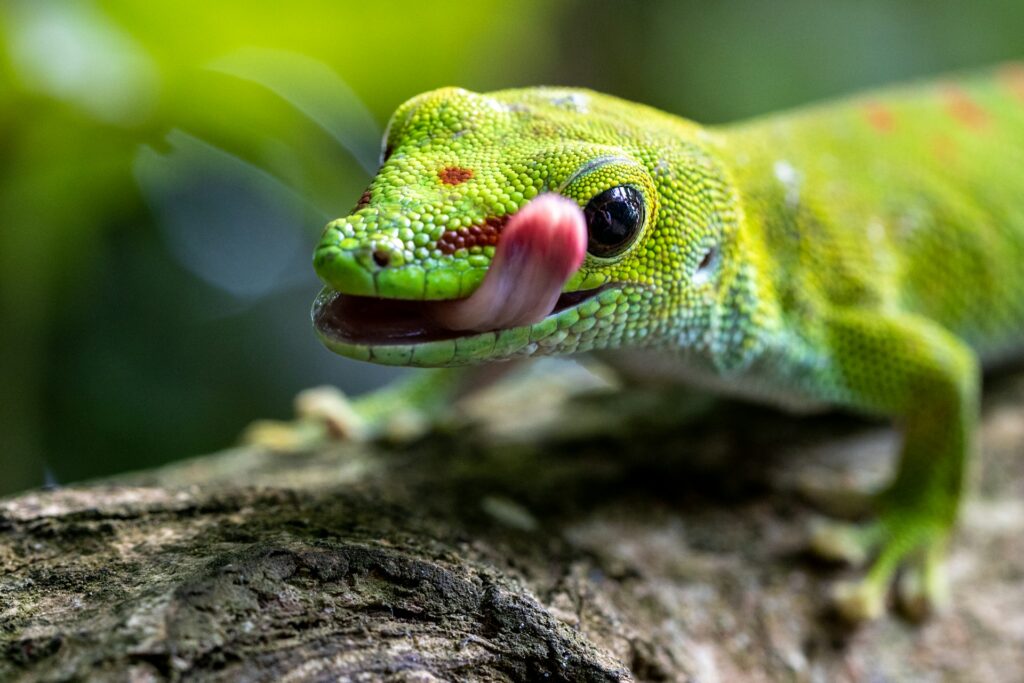
Before setting up your gecko’s enclosure, it’s essential to research the specific species you own and understand their natural environment. Different gecko species originate from varied habitats, from tropical rainforests to arid deserts, which directly influences their housing requirements. For instance, crested geckos thrive in humid environments with plenty of climbing opportunities, while leopard geckos prefer drier settings with multiple hiding spots. Replicating these natural conditions helps your gecko feel secure and reduces stress significantly. Spending time learning about your gecko’s wild counterparts will provide valuable insights into creating the most suitable captive environment.
Selecting the Right Enclosure Size

A properly sized enclosure is fundamental to your gecko’s well-being and stress levels. An enclosure that’s too small restricts natural movement and exploration, potentially leading to stress and physical health problems. Conversely, a terrarium that’s excessively large might make some gecko species feel exposed and vulnerable. As a general guideline, provide a minimum of 10 gallons for smaller species like house geckos, and at least 20 gallons for larger species such as leopard geckos and crested geckos. For arboreal species that climb frequently, prioritize enclosures with greater height than width. Remember that these are minimum recommendations, and providing additional space, when done with proper enrichment, can benefit your gecko’s quality of life.
Creating Appropriate Temperature Gradients
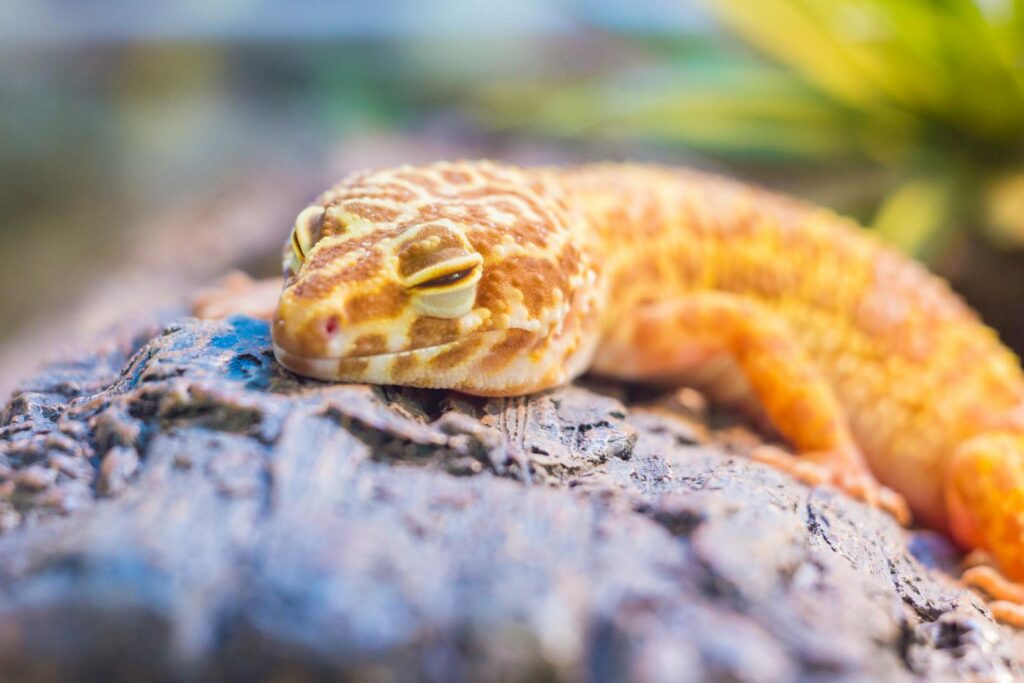
Temperature regulation is crucial for geckos as they are ectothermic animals that rely on external heat sources to regulate their body temperature. A stress-free environment must include a proper temperature gradient, allowing your gecko to thermoregulate by moving between warmer and cooler areas. Establish a warm side of the enclosure (usually 88-90°F for species like leopard geckos) using under-tank heaters, ceramic heat emitters, or appropriately distanced heat lamps. The cool side should remain around 75-80°F, creating that essential gradient. Avoid heat rocks, which can cause dangerous burns, and always monitor temperatures with reliable thermometers placed at both ends of the enclosure. Consistently inappropriate temperatures can lead to chronic stress, digestive issues, and compromised immune function.
Maintaining Proper Humidity Levels
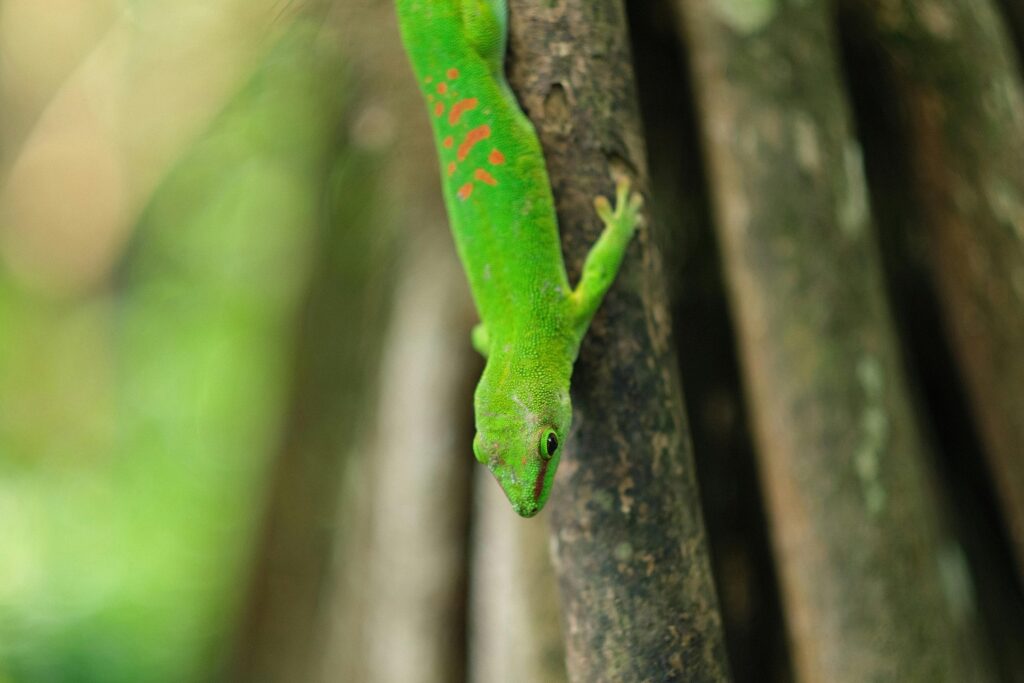
Humidity requirements vary significantly between gecko species and maintaining the correct moisture level is vital for preventing stress and health problems. Desert species like leopard geckos typically require lower humidity levels (around 30-40%), while tropical species such as crested geckos need higher humidity (60-80%). Incorrect humidity can lead to respiratory infections, shedding difficulties, or dehydration—all significant stressors for your pet. Measure humidity using a reliable hygrometer placed in the middle of the enclosure. For species requiring higher humidity, incorporate regular misting, a larger water dish, or moisture-retaining substrates like coconut fiber. For arid-dwelling species, ensure proper ventilation and avoid overly damp conditions that could lead to bacterial or fungal issues.
Providing Multiple Secure Hiding Spots
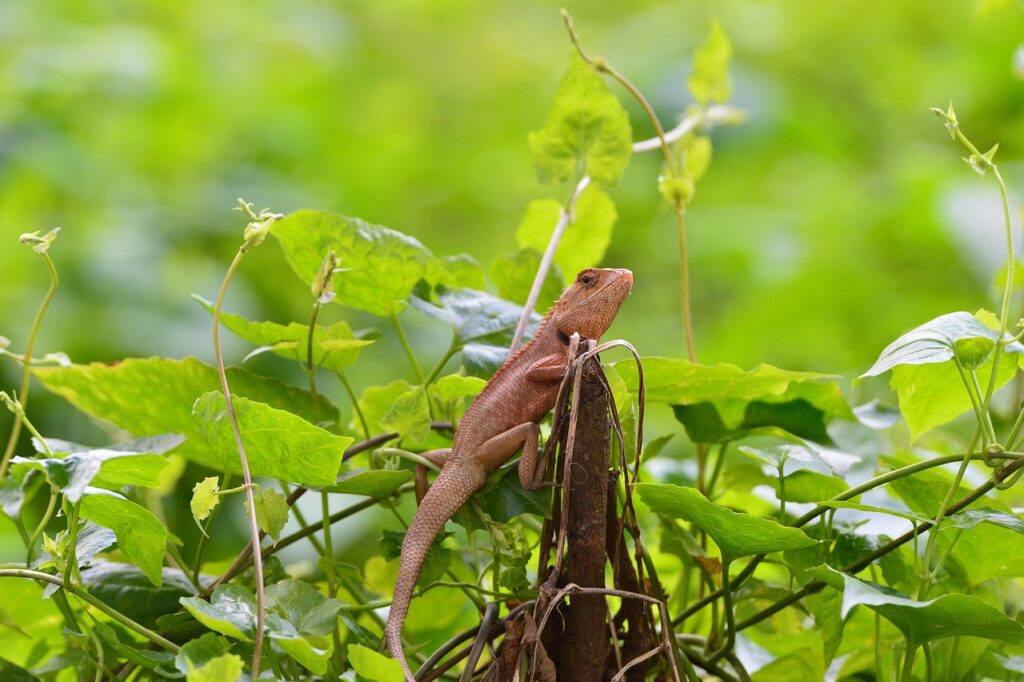
Hiding places are perhaps the most important stress-reducing feature in your gecko’s enclosure, as they provide security and privacy. Geckos naturally seek shelter from predators and harsh environmental conditions, and captive geckos retain this instinct. Include at least three hiding spots distributed throughout the temperature gradient—one in the warm area, one in the cool area, and one in a middle zone. Commercially available hides, cork bark, sanitized natural wood pieces, or even DIY options made from food-safe containers can work well. Ensure that hides are snug enough that your gecko feels secure (they often prefer spaces where their bodies can touch the sides and top) but large enough for comfortable movement. A gecko without adequate hiding options will experience chronic stress, as they’ll feel constantly exposed and vulnerable.
Selecting Safe and Comfortable Substrate
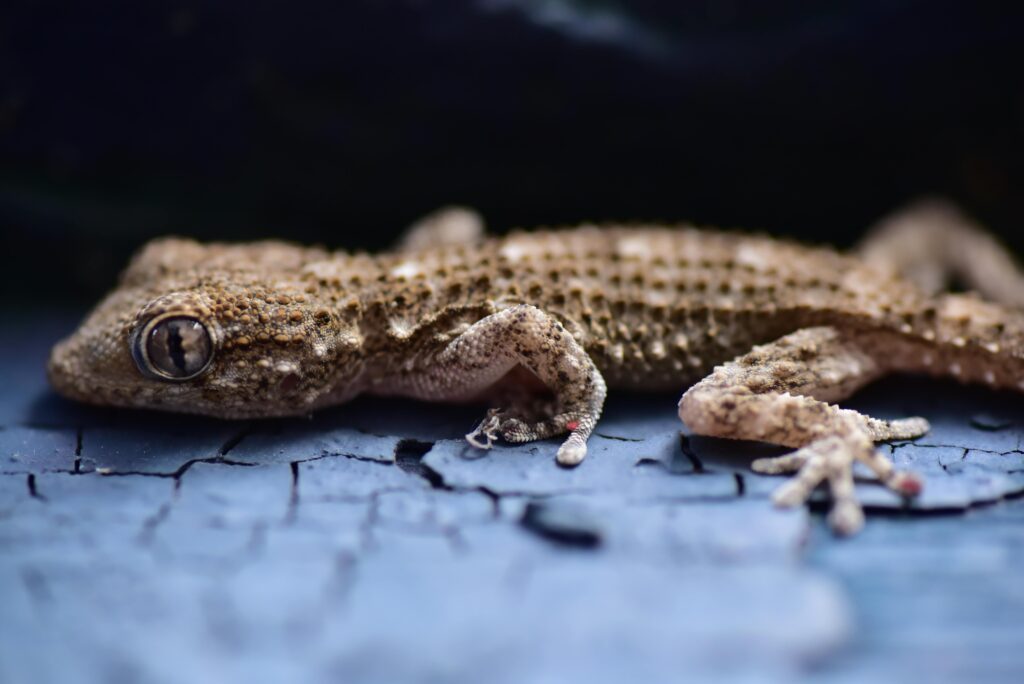
The substrate lining the bottom of your gecko’s enclosure significantly impacts their stress levels and overall health. Inappropriate substrates can cause impaction if accidentally ingested, create unhygienic conditions, or fail to provide proper footing. For leopard geckos and similar terrestrial species, options like paper towels, reptile carpet, slate tiles, or non-adhesive shelf liner provide safe surfaces that are easy to clean. For tropical species requiring humidity, substrates like coconut fiber, cypress mulch, or specialized reptile soil mixtures work well when properly maintained. Avoid calcium sand, wood chips, gravel, or other particulate substrates that pose impaction risks for most gecko species. The right substrate should allow your gecko to move comfortably, support natural behaviors like digging (for species that do this naturally), and contribute to appropriate enclosure humidity.
Creating a Naturalistic Environment
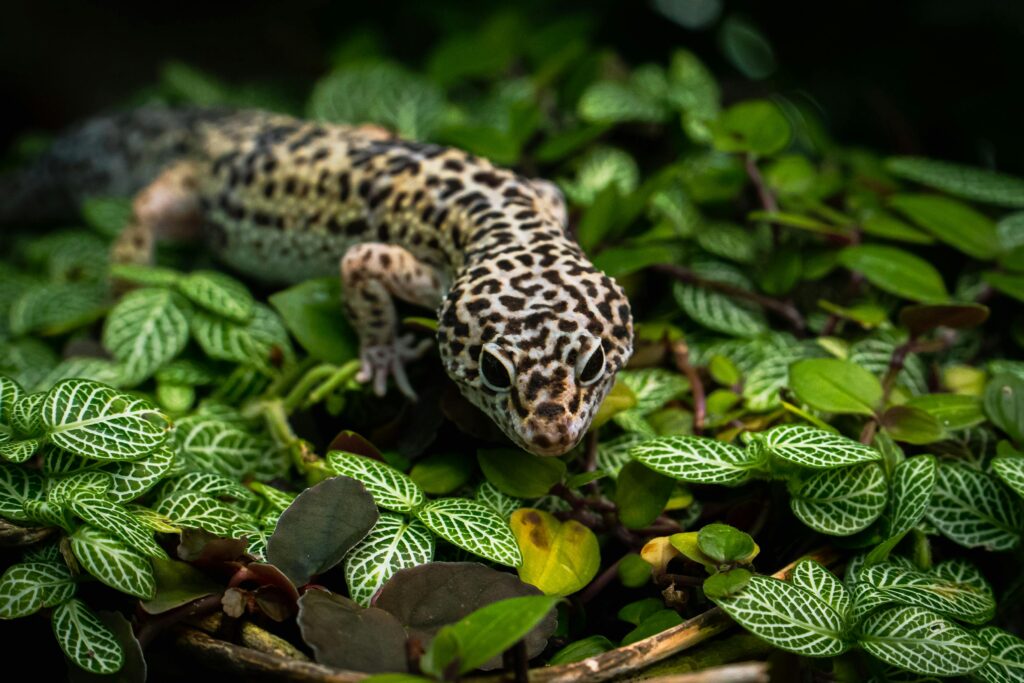
While minimalistic setups can function adequately, research suggests that naturalistic environments with appropriate enrichment reduce stress and promote natural behaviors in reptiles. Incorporate sanitized branches, plants (live or artificial), rocks, and other decorations that mimic your gecko’s natural habitat. For arboreal species like crested geckos, provide sturdy climbing structures and elevated hiding spots. For terrestrial species, create ground-level complexity with rocks, logs, and varied terrain. Live plants can benefit tropical gecko species by helping maintain humidity and providing additional climbing opportunities, though ensure any plants used are non-toxic. A naturalistic setup not only reduces stress by providing security and stimulation but also creates a more visually appealing habitat for you to enjoy.
Implementing Proper Lighting Cycles
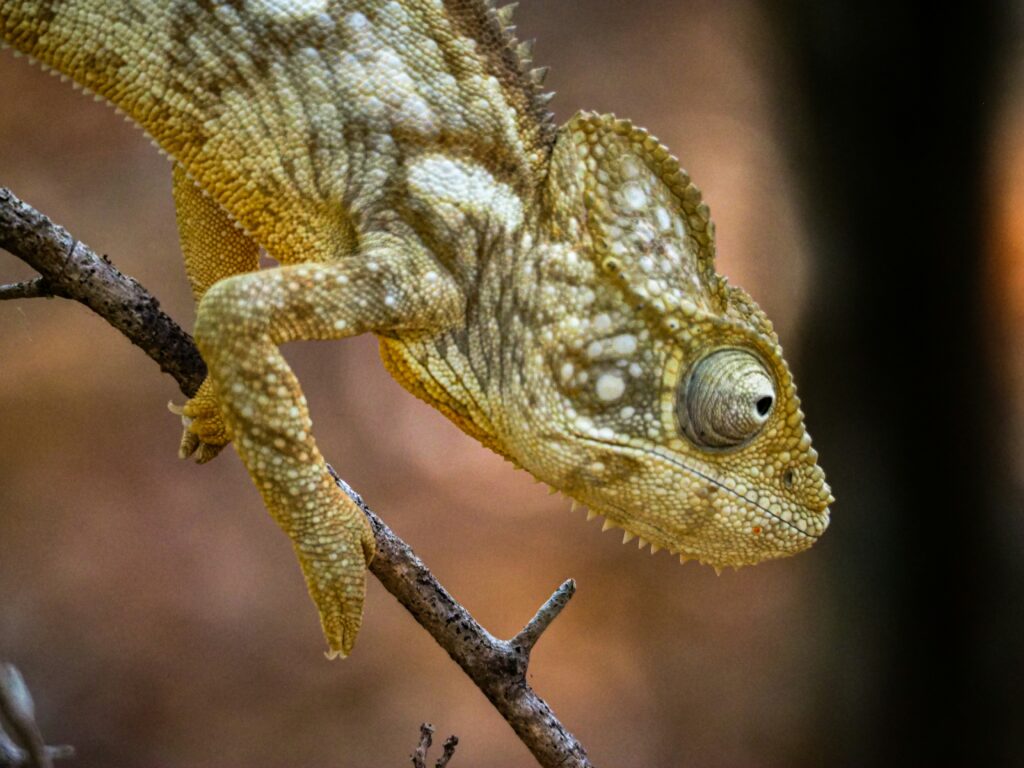
Consistent lighting schedules help regulate your gecko’s biological rhythms and reduce stress caused by unpredictable environments. Most gecko species benefit from a regular 12-hour day/night cycle that mimics natural conditions. While many geckos don’t require UVB lighting (though emerging research suggests some benefits for most species), providing low levels of UVB can support vitamin D3 synthesis and calcium metabolism. For nocturnal species, avoid bright daytime lighting directly over hiding areas, which can create stress if they can’t escape the light when resting. At night, never use colored lights (like red or blue “night” bulbs), as geckos can see these colors and the constant illumination disrupts their natural cycles. Instead, use ceramic heat emitters or heat mats that produce heat without light if nighttime warming is necessary.
Positioning the Enclosure Properly

The location of your gecko’s enclosure within your home plays a significant role in their stress levels. Place the habitat in a room with relatively stable temperatures, away from drafty windows, heating/cooling vents, and direct sunlight which can create dangerous temperature fluctuations. Avoid high-traffic areas or locations with frequent loud noises, as constant disruption can cause chronic stress for these generally shy creatures. Similarly, keep the enclosure away from other pets that might view your gecko as prey, as the constant presence of potential predators causes significant anxiety. Position the enclosure at a moderate height—not too high where the gecko might feel exposed, and not directly on the floor where vibrations and activity are most intense.
Establishing a Consistent Handling Routine

While handling is not essential for a gecko’s well-being, many owners enjoy interacting with their pets. To minimize stress, develop a consistent, gentle handling routine that respects your gecko’s temperament and natural behaviors. Begin with very brief sessions (just 1-2 minutes) and gradually increase duration as your gecko becomes more comfortable. Never grab your gecko from above, as this mimics predator attacks—instead, scoop from underneath or gently guide them onto your hand. Always handle your gecko in a secure location, close to a soft surface in case of falls. For particularly shy species or individuals, consider limiting handling to necessary health checks and cleaning, as some geckos simply prefer minimal contact. Remember that even the most docile gecko may become stressed with excessive handling, so watch for signs like rapid breathing, tail waving, or attempting to escape.
Feeding Appropriately to Reduce Stress
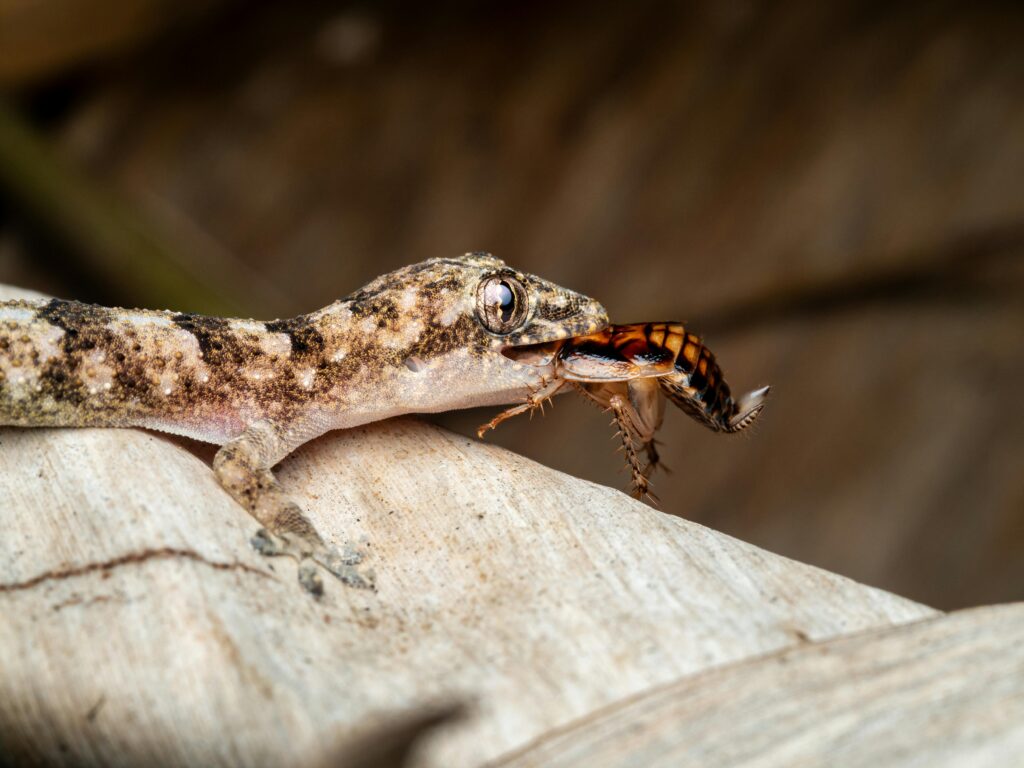
Feeding practices significantly impact your gecko’s stress levels and overall health. Establish a consistent feeding schedule appropriate for your gecko’s species, age, and individual needs. Most adult geckos do well with feeding every 2-3 days, while juveniles may need daily meals. Offer food during your gecko’s natural active periods—evening for nocturnal species like leopard geckos, and dusk or dawn for crepuscular species like crested geckos. Provide appropriate variety in the diet to ensure nutritional completeness; for insectivorous species, rotate between crickets, dubia roaches, mealworms, and other suitable insects, while frugivorous species like crested geckos need commercial powdered diets supplemented with fresh fruits. Always remove uneaten live insects after feeding sessions, as they can stress or even bite your gecko, particularly when it’s resting.
Maintaining Excellent Hygiene
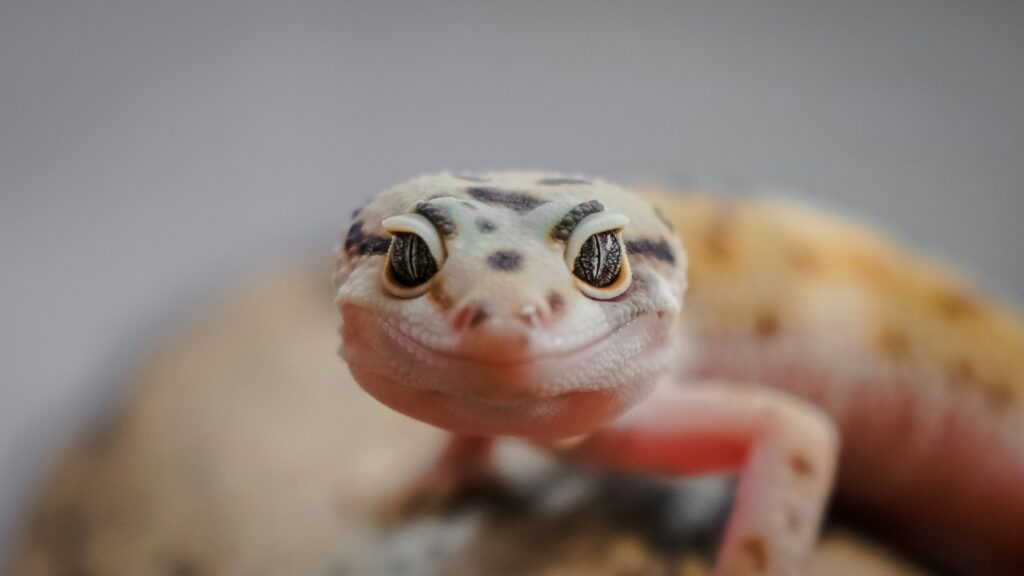
A clean environment is essential for reducing stress and preventing disease in captive geckos. Establish a regular cleaning schedule that includes daily spot-cleaning to remove waste and uneaten food, weekly substrate changes or cleaning of cage furniture, and monthly deep cleaning of the entire enclosure. Use reptile-safe disinfectants and ensure all cleaning products are thoroughly rinsed away before returning your gecko to its habitat. Pay special attention to water dishes, which should be cleaned and refilled daily to prevent bacterial growth. For species requiring higher humidity, monitor decorations and substrate for mold growth, which can develop rapidly in warm, moist environments. While cleanliness is important, avoid disturbing your gecko unnecessarily during its resting periods, as frequent disruptions can become a significant source of stress.
Recognizing and Addressing Signs of Stress
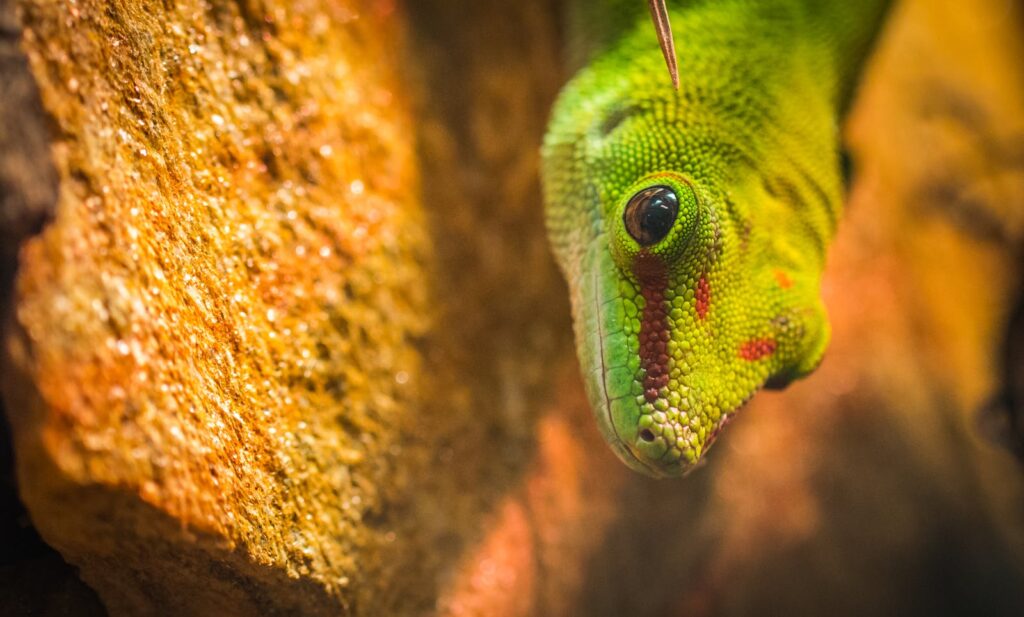
Even with the best setup, geckos may occasionally show signs of stress that require prompt attention. Learn to recognize stress indicators such as decreased appetite, excessive hiding, aggressive displays, unusual defecation patterns, or abnormal skin coloration. Weight loss, lethargy, and increased breathing rate are serious signs that may indicate stress has progressed to affect physical health. When you notice stress behaviors, systematically evaluate all habitat parameters including temperature, humidity, hiding opportunities, and recent changes to the environment. Sometimes stress results from an underlying health issue, so consult an experienced reptile veterinarian if symptoms persist despite environmental adjustments. Remember that subtle behavior changes often provide the earliest indication that something in your gecko’s environment needs adjustment, making regular observation an essential part of responsible gecko keeping.
Creating Your Gecko’s Stress-Free Sanctuary
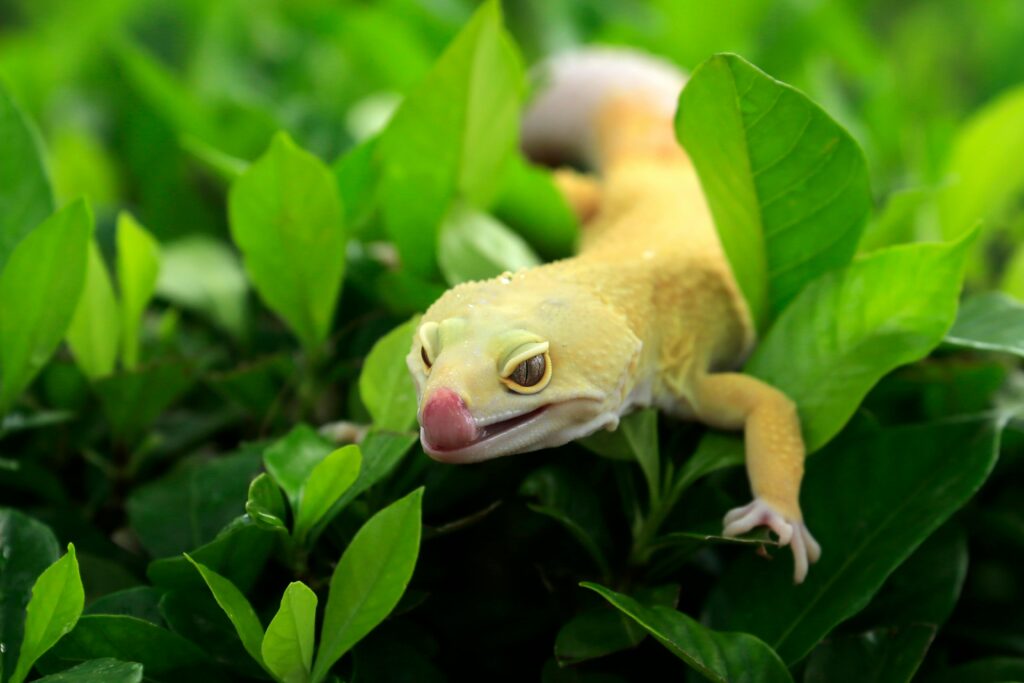
Establishing a low-stress environment for your gecko requires attention to detail and an understanding of their specific needs. By carefully replicating natural habitat conditions, providing appropriate temperature gradients, maintaining proper humidity, and offering ample security through hiding spots, you set the foundation for your gecko’s physical and psychological well-being. Remember that small adjustments can make significant differences in your gecko’s stress levels, and continual observation allows you to fine-tune their environment. Taking the time to create a thoughtfully designed habitat demonstrates your commitment to providing the best possible care for your scaled companion, rewarding you with a healthy, active gecko that displays natural behaviors and may live for many years in your care.

